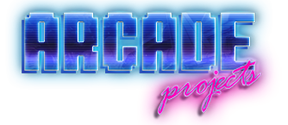winteriscoming
Champion
Yeah, that one passes through the analogue voltage to JVS I/O. As long as the board is powered, regardless of self test or error state, JVS I/O sees wheel movement.i guess that's the strv-out pin function.
Yeah, that one passes through the analogue voltage to JVS I/O. As long as the board is powered, regardless of self test or error state, JVS I/O sees wheel movement.i guess that's the strv-out pin function.
which parameter used when you increment them?Did you try to make small incremental changes to the destination pot position? For me it seemed to ignore commands if I tried to send a value too far away from the current value.
I would have had 5 and 7 at something higher than 10 (I don't think I was seeing any movement or very little lower than that), but I think as long as they were set to something noticeable, I was seeing movement.which parameter used when you increment them?Did you try to make small incremental changes to the destination pot position? For me it seemed to ignore commands if I tried to send a value too far away from the current value.

Thanks for sharing, but it looks like a different protocol.I don't know if it's useful to you. But Bigpanik at Supermodel worked on an model 3 interface board a while ago. He only made it auto center I think. Check his link http://superusr.free.fr/model3.htm . Maybe you might get a piece of the puzzle from it, maybe not
So instead of the SEGA MIDI FFB, you can swap in the WMMT FFB and all wiring is the same?Good news. This FFB board totally works with WMMT2. I think this game just requires the all clear communication back from the board that WWMT1 apparently doesn't care about.
Based on Dion's logs from WMMT3, I suspect this board may be interchangeable among the games.
Anyway, for my purposes the fact that WMMT 1 and 2 use the same protocol is good, because I can use the same solution for both.
Darn. So you would also need the NAMCO I/O. My goal is similar but mainly, I want to find out what components need to be swapped between SEGA ID2 cab and NAMCO WMMT cabs.No, unfortunately the wiring for the 2 FFB units are quite different. The motors are completely different, too, so it's not going to be feasible to swap into a MIDI FFB setup.
The eventual goal to remedy that is going to be coming up with a protocol translator so everything uses MIDI FFB.
To kind of close the loop on this theory, although I haven't tested it, I have a much better understanding of the outputs on the JVS I/O boards due to my custom JVS I/O board that I have been working on. Outputs on the I/O merely sink current to ground. So for a lamp you'd have it wired up with either 5v or 12v going to the positive lead on the lamp (coming from the respective pin for 5v or 12v on the I/O board in the case of Sega I/Os... maybe the same on Namco I/O) and the negative lead from the lamp goes to the output pin on the I/O where it is grounded when the I/O is activated, thus illuminating the lamp.meant to say in the previous post that I'm on Sega I/O in an OR2SP cab. What is wired stock to the Start button lamp in this cabinet seems to correlate to what the POWER pin should be doing from the Namco I/O. I also confirmed that the FFB pin can be held to ground when the board is powered up, it does its self test and waits an indefinite amount of time for the pin to go high again. Therefore, I believe the lamp I'm seeing does correlate to the this pin. It comes on when the game boots during the wheel test and stays on for the rest of the game. I believe this is the pin that corresponds to the POWER pin on the Namco I/O. Of course it's not a lamp on the Namco I/O, it's what sinks this pin on the FFB.
To further solidify my theory, there is no output test in the test menu for WMMT that lights this lamp, and yet this lamp comes on during wheel test when the FFB board's pin should be high.
I tested this today with my custom I/O. I wired power into one of the outputs and mapped it as output 1-1 and it successfully drove the POWER line and initialized the Namco FFB board. Had I been using just a Sega Type 1 I/O, it would have needed to be wired into output 1-1, which would probably conflict with the wiring in most other games as this is typically the start lamp.Therefore, all that needs to happen with this POWER pin from the Namco FFB board is that it needs to get wired directly into the corresponding output (Output 1-1 on the Sega Type 1 I/O), and the I/O will control the POWER pin accordingly.
